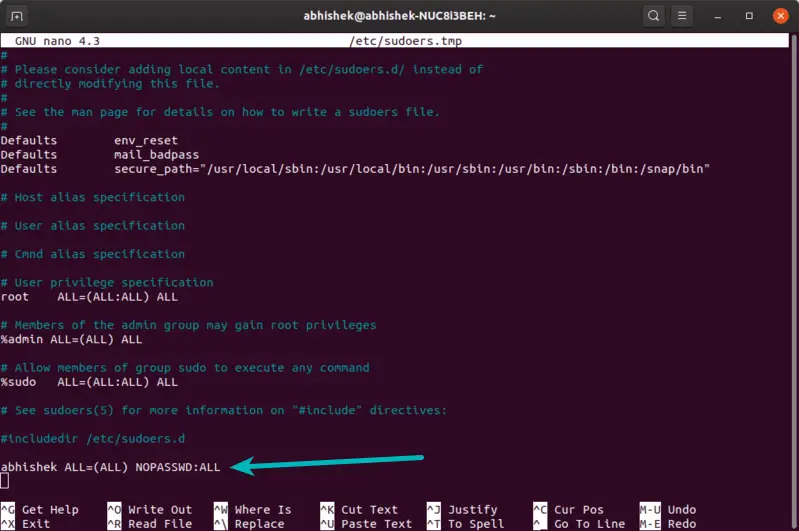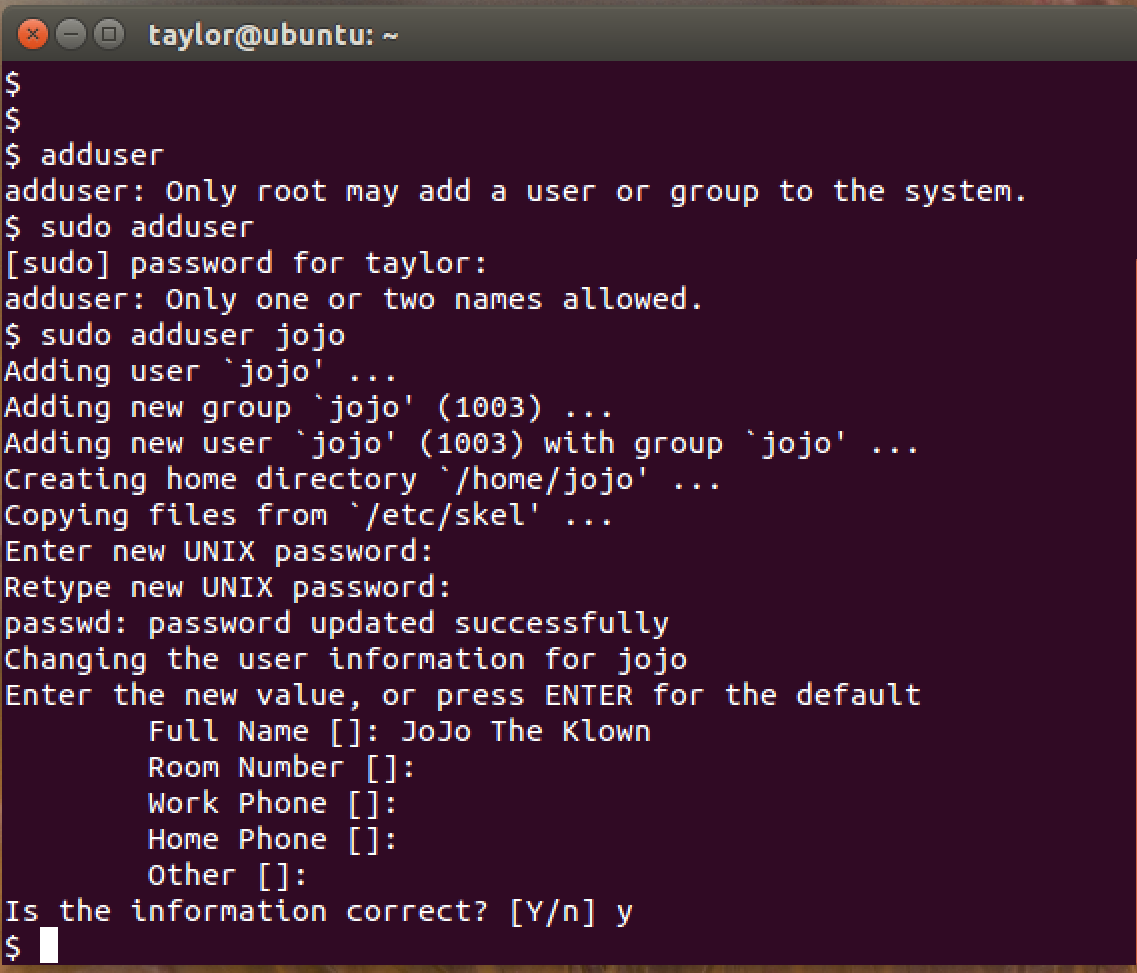
All you have to do is to add a line like this in this file: user_name ALL=(ALL) NOPASSWD:ALL This will open the default text editor (Nano in Ubuntu) for editing this file. Use the following command to edit the /etc/sudoers file: sudo visudo

#Ubuntu add user to sudo without password how to
Let’s see how to use sudo with no password.īut first, back up the sudoer file as a precautionary measure: sudo cp /etc/sudoers ~/sudoers.bak Execute all sudo commands without password Maybe, you should disable SSH access with password first. If you are on a server, you should be extra careful specially if you have SSH enabled. In Linux, you can change sudo configuration to run some or all command with sudo but without entering password. This is specially if you are the only user on the system or if you think some commands are okay to run without password.

Some users may find it cumbersome to enter the password all the time. Which means that you’ll have to enter the password again if you run a command with sudo after fifteen minutes. The default timeout for the password is 15 minutes (in Ubuntu Linux). When you run a command with sudo, it asks for your account’s password. Most Linux distributions like Ubuntu, Debian, Fedora use the sudo mechanism to allow admin users to run commands with root privileges. Once that is successfully done, you or your members of the specified group will never be asked for a password ever again.Learn how to run some or all sudo commands without entering the password on Ubuntu or any other Linux distribution. The sudoers file will be automatically overwritten if the modified version has no syntax errors. Since I want to enable password-less sudo for my user named as pratham, I added the following line in my editor. If you want to enable this for a group, use the following syntax: %GROUPNAME ALL=(ALL:ALL) NOPASSWD:ALL In this syntax, the important part of this line is the NOPASSWORD part, it essentially allows ALL (only pratham) to run the sudo command without password. In the editor, add the following line at the very bottom, but before the #includedir statement. When you run the visudo command, your sudoers file (if not previously modified) will look very similar to mine. Hence, the sudo command is necessary if you are a non-root user. To run the visudo command, you must have superuser access. If everything seems okay, the /etc/sudoers file is overwritten by the temporary file and new changes are brought in effect. When you edit it, the changes will be written to the temporary file that was created in the /tmp directory and it is check for syntax errors. The visudo command will copy the /etc/sudoers file to a randomly named file in /tmp directory and open that in the Vi editor. This file should be edited only by the use of the visudo command. The sudoers file is a configuration file for the sudo command. This is different than editing a regular text file in the command line. When your tasks are complete, you can exit out of the root user's shell by either pressing the Ctrl + D key combination or by typing the exit command. Once you are logged in as the root user, you can run any command that needs higher privilege without having to use the sudo command at all. The shell prompt for a normal user (in bash) is the dollar symbol ( $), and when you log in as root, your prompt will change to the hash symbol ( #).

To log in as the root user, simply use the -i option with the sudo command. This is only a bit more secure and should be attempted with extreme caution. That is because you are still initially asked for the password when you log in as the root user. This method is slightly more secure than removing the password prompt altogether. That may not be the case in Ubuntu server where a dedicated root account with a password is set already.

This works well on the Ubuntu desktop where the root user is not set and any sudo user can switch to the root user. Since you are logged in as the root user, you can do anything without the necessity of a password. The first method is to log in as the root user. Method 1: Temporarily log in as the root user Please consider your security threat model before going through with this. Following either method will reduce the level of security of your Linux installation.


 0 kommentar(er)
0 kommentar(er)
